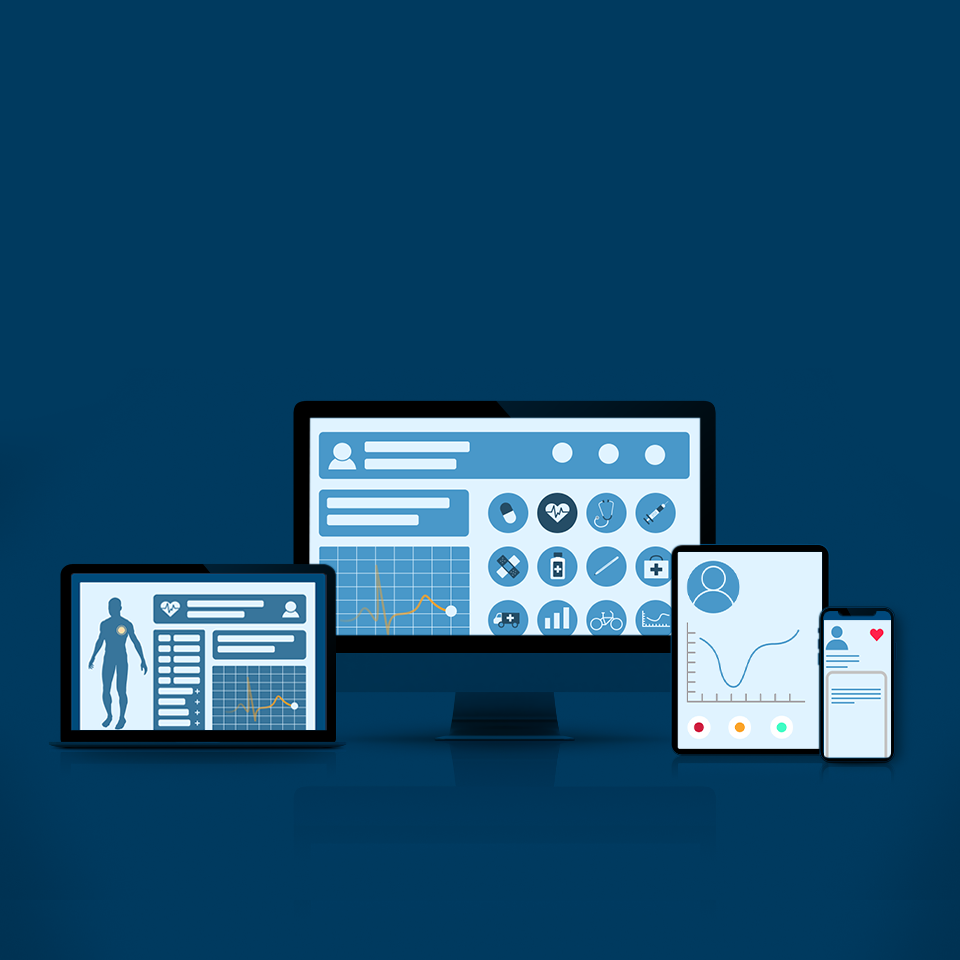EHR System: Challenges and Benefits
The complex data sets and large amounts of data in healthcare resulted in the need for interoperability and seamless communication between multiple organizations’ systems. Storing and sharing protected health information was regulated by legislation such as the ONC's Cures Act Final Rule. Failing to comply with the standards of data storage and sharing could result in various penalties. However, we can reap numerous benefits once we overcome the challenges of implementing electronic health records software.
What Is an EHR in Healthcare?
An electronic health record is a software designed to help healthcare organizations and patients by offering easy access to patient information including, but not limited to:
Medical history, diagnoses, medications, treatment plans, immunization dates, allergies, radiology images, and laboratory and test results
Allow access to evidence-based tools that providers can use to make decisions about a patient’s care
Automate and streamline provider workflow
The main advantage of this technology is its ability to store and share patient information in a format that allows authorized third parties to access, view, and utilize this information to maximize patient benefits. EHR integration is no easy task, and it presents its own set of challenges. However, overcoming implementation challenges will allow both patients and providers to take full advantage of the benefits this technology can offer.
EHR Implementation Challenges
High Cost of Implementation
Installing this technology in your medical institution can be a costly endeavor. Selecting, implementing, and deploying a successful solution requires a lot of time and resources. Additionally, pending on vendors and additional features your system may require, some unplanned costs may surface. It is essential that you assess your organization’s readiness to implement an EHR system and to collaborate with a software vendor that knows the industry and has experience in deploying this software.
Training Is Time-Consuming
Your staff needs to understand how to properly use this system to maximize its benefits and not interrupt the clinical workflow. Staff and management need to collaborate to fully implement this technology and to avoid hurdles in its usage.
Data Privacy
Healthcare has been the number one target of cybercriminals for the past consecutive twelve years. The high cost of healthcare ransomware makes it a lucrative business, therefore the federal rule imposed a national policy to protect patients and their data. Electronic health records store a lot of patient information, therefore one of the major tasks of providers of this technology is to ensure data security.
Data Migration
Digitizing paper documents can be a logistical hassle and can cause errors due to manual data entry. Additionally, this process is time-consuming can create double work, and is generally arduous to complete. However, following successful deployment, this technology can lead to reduced human error and generally can alleviate the burden of a major chunk of administrative processes.
Lack of Planning
Installing an electronic health records system goes beyond a technical upgrade. It brings about streamlined communication, improved processes, and changes to the overall business workflow. It is important to approach this implementation strategically and educate your staff, management, and all affected parties about the changes that will happen in your system. Failure to do so can result in data breaches and security threats, hurting you in the long run.
Benefits of Electronic Health Records
Improved Patient Outcomes
Implementing this technology has numerous benefits for both patients and providers. Most physicians reported that the use of EHR systems enhanced patient care (78%), helped them access a patient’s chart remotely (81%), and alerted them to a potential medication error (65%). All of these things combined lead to improved clinical outcomes, reducing potential errors and improving diagnostic accuracy.
Enhanced Patient Engagement
Contemporary patients are much more tech-savvy than their predecessors. They know how to utilize the benefits of this technology, as it allows them to access their own health, review it, and have much better communication with their care provider. From there, electronic health records software can help patients with self-management, provide them with education on their condition and treatment, and make patients overall more involved with their healthcare delivery, which has been linked with improved patient outcomes.
Scalability
If you are worried about scalability issues, EHRs can take care of that, especially if we are talking about a cloud-based system. Expanding your medical organization through mergers, acquisitions, or other ways which drastically increase the number of your patients can hinder your operations without properly implemented solutions. That is why cloud solutions with proper IT infrastructure can handle integrations with larger patient populations.
Improves Care Coordination
By having a standardized way of storing and sharing patient information, you can improve care coordination which directly translates into seamless interoperability and improved clinical outcomes. Successful EHR integration means that patients, providers, and payors reap the benefits of improved communication and easily accessible data, as opposed to having said data stored in fragmentary and disconnected systems. Having better patient information coordination means a reduction in errors and unnecessary tests, improved patient diagnostics, and improved quality of care.
Increase in Revenue
The government provides incentives to organizations that incorporate electronic health records software. By meeting the meaningful use standard, organizations can earn tens of thousands of dollars, and also avoid penalties for failing to incorporate this technology. The incentives and penalties have the goal of increased adoption of this technology, and the government also provides guidelines on how to successfully do so.
Additional features related to resources are the options patients acquire through EHR which provide payment and billing tools, automatically scrub claims of errors, and increase the first-time acceptance rates for insurance claims, helping speed up reimbursements without lost or delayed claims.
Our Expertise
With three decades of experience, we have industry-specific knowledge to develop an EHR system that fits your exact needs. We already deployed successful solutions in the past, and you can see some of our past deployments below. Reach out to find out whether Vicert can develop a solution for you.



